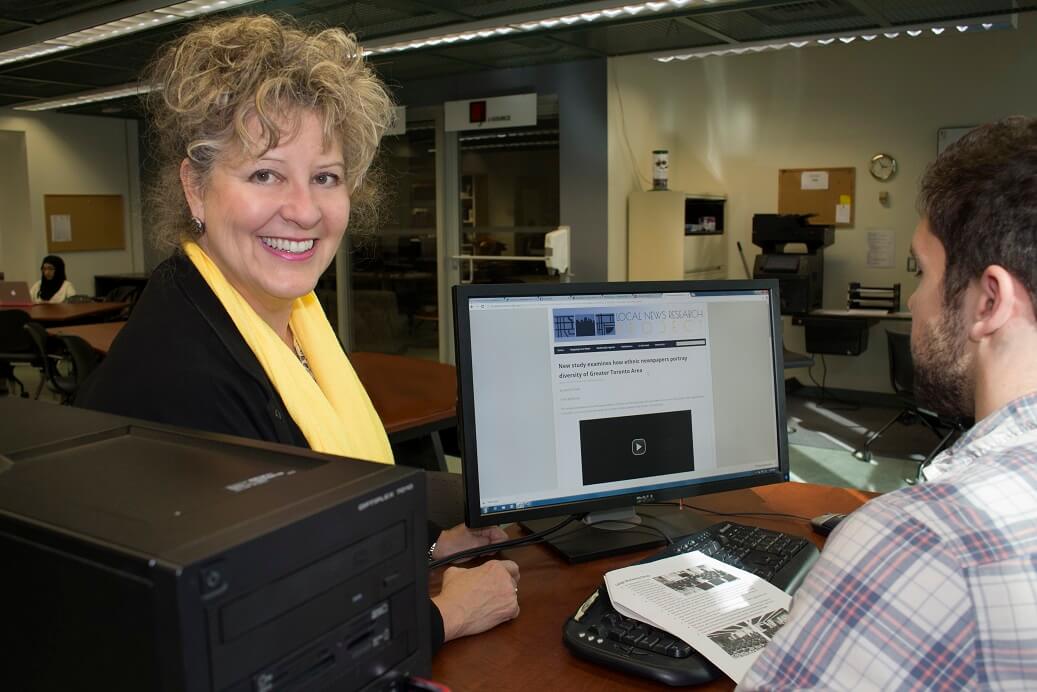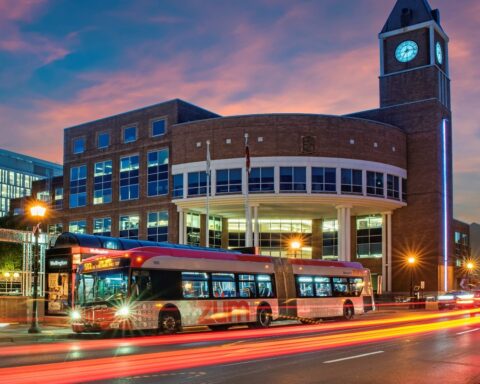 Prof. April Lindgren (picture at right) of Ryerson University has made a name for herself studying ethnic media in Canada for many years. Late last year, she completed a study focused on Brampton, titled “Municipal Communication Strategies and Ethnic Media: A Settlement Service in Disguise”, which examined the kind of steps taken by the city to reach out to its immigrant population.
Prof. April Lindgren (picture at right) of Ryerson University has made a name for herself studying ethnic media in Canada for many years. Late last year, she completed a study focused on Brampton, titled “Municipal Communication Strategies and Ethnic Media: A Settlement Service in Disguise”, which examined the kind of steps taken by the city to reach out to its immigrant population.
This research was a follow up to a 2007 study that found Brampton unresponsive to the needs of its immigrant community. New Canadian Media first reported on the latest study here – Ethnic Media Demand More from City of Brampton.
Q. What was the goal of this study?
Research that was done about a decade ago found that Brampton was quite unresponsive to the needs of its increasingly diverse population. But in 2015 City Council approved an ethnic media pilot project that was probably the most pro-active in the country. This study investigates the reasons for the dramatic shift in approach.
Q. What were your main findings?
Over the years the City of Brampton did make some limited attempts to use ethnic media to reach out to its newest residents, the vast majority of whom are Punjabi-speaking immigrants. In 2007, for instance, it began including ethnic media outlets on its list of media the receive the municipality’s English-language press releases. Our research concluded that this approach didn’t have much of an impact. When we looked at the content of the Brampton-based Punjabi Post daily newspaper over three weeks in 2011, only three of the 157 articles dealing with Brampton had anything to do with City Hall-related issues.
In 2013, the city made another attempt to get municipal news and information out to residents via ethnic media by hiring a specialty media coordinator who speaks and reads Punjabi. Then in 2015 things changed dramatically. That’s when City Councillors approved significant funding to translate Brampton’s media releases into French as well as the three most commonly spoken languages after English – Punjabi, Urdu and Portuguese.
There were a number of reasons for this shift. First, there was growing evidence of tension between long-term residents and the city’s rapidly expanding Punjabi-speaking population. This pointed to the need for better intercultural understanding. In terms of reaching out to immigrants, improving the availability of city news and information through ethnic media is one way to help people – particularly people who aren’t fluent in English – to better understand what is going on in the city as a whole. It’s also a way to help people understand the values and priorities of their adopted place.
The election of a new mayor and many new Councillors during the 2014 municipal election was the second important reason for the shift in attitude. Unlike their predecessors, these municipal politicians thought the City did have an important role to play in reaching out to newcomers and making them feel part of the city.
The jury is still out on whether ethnic media will carry more City Hall related news now that the press releases are being translated. The pilot project is ongoing and the results will be of great interest to other municipalities. In the interim, though, I argue that the very act of reaching out to news outlets that cover ethnic communities is symbolically important for Brampton’s multicultural population. It acknowledges the importance of those media outlets as community institutions and it recognizes the city’s obligation to communicate decisions and policies to all citizens.
In the interim, though, I argue that the very act of reaching out to news outlets that cover ethnic communities is symbolically important for Brampton’s multicultural population.
Q. Your study on Brampton specifically points to several limitations and drawbacks in the way ethnic media go about the profession of journalism. How do we as a multicultural society address this?
Brampton City officials ran into situations over the years where some ethnic media publishers linked the amount of City Hall coverage they were willing to publish to the amount of advertising the City purchased. This is obviously an ethical issue that compromises the integrity of news coverage. In some cases the problem is that publishers may not have a lot of background in journalism and therefore they don’t realize how such practices potentially undermine confidence in their publications. This is a situation where education and professional training can probably make at least some difference. This education and training should make the point that the long-term survival of any news media outlet depends on public faith in the integrity of the news coverage.
Q. Your content analysis suggests that ethnic media have a different “news agenda” than the mainstream media. Can you elaborate on this?
Ethnic media often do have a different news agenda and rightly so. Their competitive advantage is in telling stories about people, places and events in their community that are not covered by mainstream news media. I would argue, though, that ethnic news outlets could and should cast a wider net, that is, they should be covering more general news in a way that is relevant and useful to their audiences. Is the city planning to increase property taxes? That affects new immigrant homeowners too. Why not talk to them about the planned increase and provide a forum for their voices to be heard? In this way, newcomers get to participate in the city-wide debate. Coverage of this sort will also increase the odds that local politicians pay attention. In this way immigrant/newcomer communities can influence municipal decisions that affect them.
Ethnic media often do have a different news agenda and rightly so.
Q. Based on this comprehensive study of ethnic media in an immigrant-rich market such as Brampton, how do you think ethnic media can better serve readers/viewers while still making a profit by keeping editorial costs down?
There is no silver bullet or single solution. One strategy would be to invite citizen experts from the ethnic community to write or talk about issues that affect people in that immigrant group. During tax season, for instance, why not ask a tax expert from the ethnic community you cover to do a newspaper Q and A or appear on a radio call-in show to talk about income tax filing? Ask a teacher from the community to write about why it’s important for parents to attend parent-teacher meetings and what happens at these meetings. Recruit a young, recent immigrant to recount what it’s like to navigate a Canadian high school or university. Highlighting community voices and providing useful, interesting information of this sort is a way to turn the media outlet into essential viewing, listening or reading – in other words it can build audience. And the bigger the audience the more attractive the media outlet is to advertisers.




